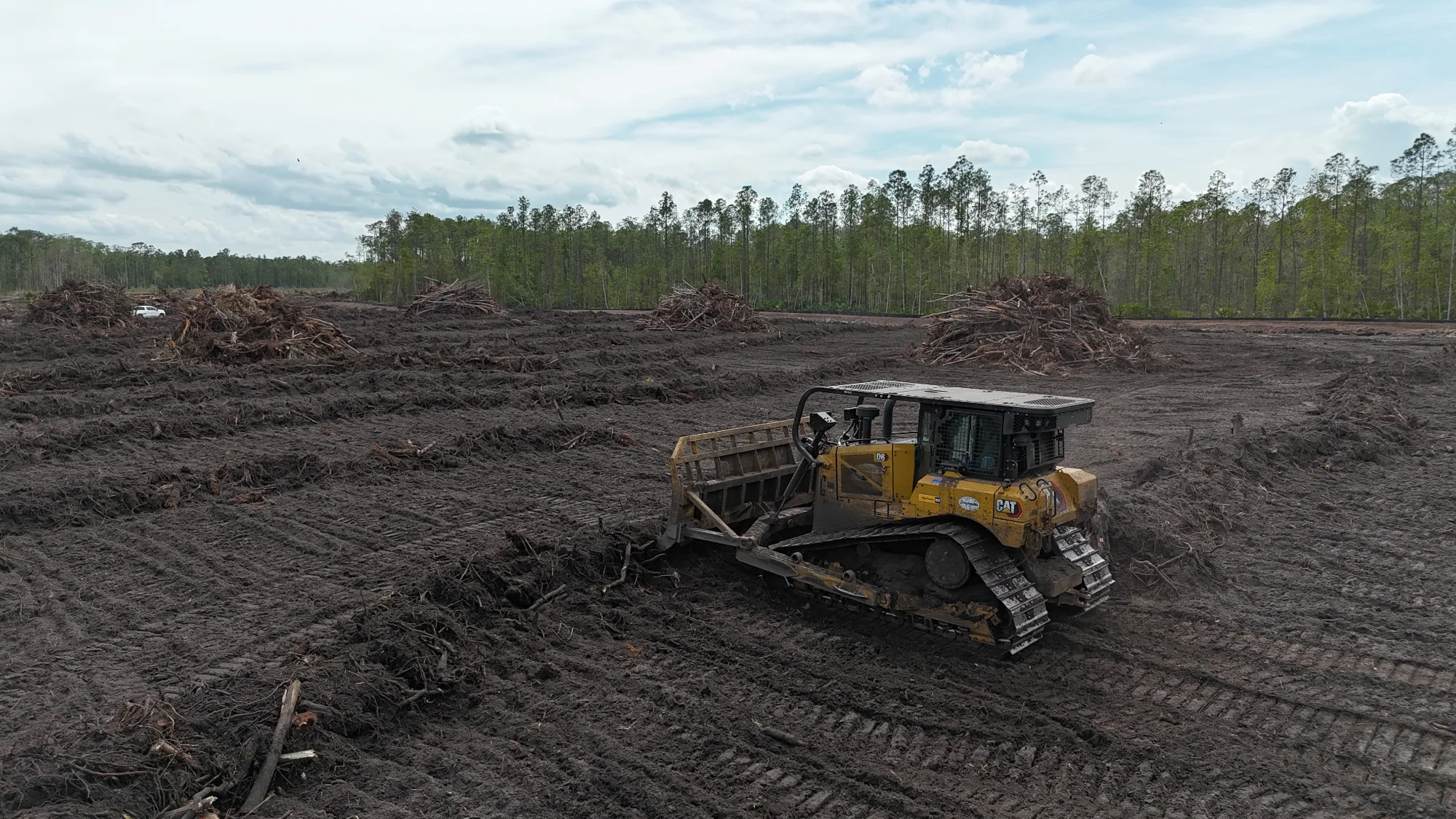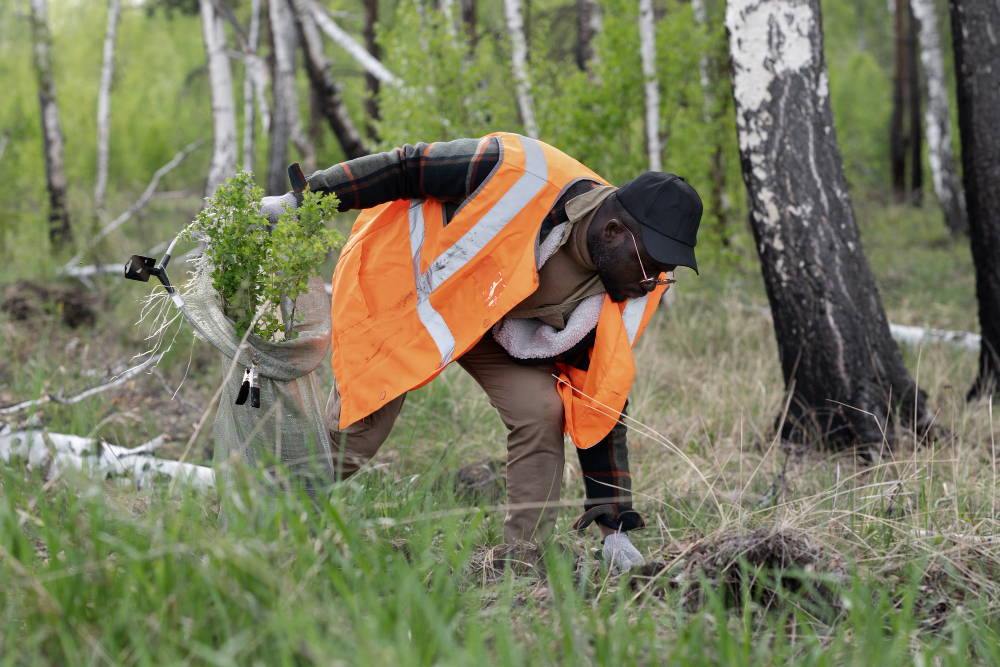

Land clearing projects can transform your property from overgrown wilderness into usable space for construction, agriculture, or landscaping. However, rushing into land clearing without proper preparation often leads to costly mistakes, legal issues, and environmental damage. Whether you're planning to build a new home, expand your commercial property, or create recreational space in Sanford, FL, thorough preparation is the foundation of any successful land clearing project.
This comprehensive guide walks you through the essential preparation steps that will save you time, money, and headaches while ensuring your land clearing project meets all local requirements and environmental standards.
Florida has specific regulations governing land clearing activities, and Sanford follows both state and local guidelines. Before breaking ground, you must understand these requirements to avoid violations that could halt your project.
Most land clearing projects in Sanford, FL require permits from multiple agencies. The Florida Department of Environmental Protection oversees environmental compliance, while local authorities handle zoning and construction permits. Tree removal permits may be necessary if you're clearing mature or protected species.
Contact the City of Sanford's Planning and Development Department early in your planning process. They can provide specific requirements for your property type and intended use. Some residential projects may have streamlined permit processes, while commercial developments typically require more extensive documentation.
Florida's unique ecosystem requires careful attention to environmental protection during land clearing. Wetlands, endangered species habitats, and protected tree species receive special protection under state law. Your property may contain these features even if they're not immediately obvious.
Schedule an environmental assessment before beginning any clearing activities. This evaluation identifies potential issues and helps you develop strategies to address them within legal requirements. Early identification of environmental concerns prevents costly project delays and ensures compliance with all regulations.
A thorough site survey provides the foundation for all subsequent planning decisions. This step involves much more than simply walking the property boundaries.
Verify your property boundaries using a licensed surveyor. Inaccurate boundary information can lead to legal disputes with neighbors or accidentally clearing land you don't own. Your survey should also identify easements for utilities, drainage, or access rights that may affect your clearing plans.
Utility companies often have easements across private property for power lines, gas pipes, or water mains. These areas may have restrictions on what vegetation can be removed and how close you can build to utility infrastructure.
Understanding your land's topography helps you plan clearing activities that work with natural water flow patterns rather than against them. Poor drainage planning during land clearing can create erosion problems, flooding, or standing water issues that are expensive to correct later.
Identify natural drainage patterns, slopes, and low-lying areas that may require special attention. Your clearing plan should preserve or enhance natural drainage whenever possible. This approach reduces the need for expensive drainage infrastructure while preventing erosion and water quality problems.
Soil testing reveals important information about your land's composition, stability, and contamination risks. Different soil types require different clearing approaches and may affect your building plans.
Clay soils may become unstable when saturated, requiring careful timing of clearing activities. Sandy soils drain quickly but may need erosion control measures. Organic soils in wetland areas have special protection requirements. Understanding these conditions helps you plan appropriate clearing methods and timing.
Hitting underground utilities during land clearing creates dangerous situations and expensive repairs. Florida law requires utility location services before any digging activities.
Contact Florida 811 (Sunshine State One Call) at least two business days before beginning any land clearing that involves ground disturbance. This free service marks the location of underground utilities including gas, electric, water, sewer, and telecommunications lines.
The marking service covers utility lines up to the property line and sometimes includes service lines to your home or business. However, private utility lines on your property may not be marked, so check with previous property owners or contractors about any private installations.
Power lines, telephone lines, and cable installations above ground also require careful attention during land clearing. Maintaining safe distances from overhead lines protects workers and prevents service disruptions to you and your neighbors.
Contact utility companies directly if your clearing activities will occur near overhead lines. They may need to temporarily relocate lines or provide additional safety measures during your project.
A well-developed clearing plan serves as your roadmap throughout the project. This document should address every aspect of the clearing process from initial vegetation removal to final site preparation.
Decide whether your project requires complete vegetation removal or selective clearing that preserves certain trees and natural features. Selective clearing costs more initially but provides immediate landscaping benefits and may reduce erosion control requirements.
Consider the mature trees on your property as valuable assets. Large, healthy trees provide shade, increase property values, and offer environmental benefits. Your clearing plan should identify trees worth preserving and ensure they receive protection during construction activities.
Large properties often benefit from phased clearing that tackles the project in manageable sections. This approach allows you to learn from early phases and adjust your plan as needed. Phased clearing also spreads costs over time and may reduce environmental impact.
Plan your phases to maintain natural erosion control until permanent solutions are in place. Clear areas closest to existing roads first to minimize impact on undisturbed areas. Save final grading and preparation for construction until just before building begins.
Professional land clearing requires specialized equipment and expertise. The right contractor selection significantly impacts your project's success, cost, and timeline.
Different clearing projects require different equipment combinations. Dense forests may need bulldozers and forestry mulchers, while lighter vegetation can be cleared with smaller machines. Your contractor should match equipment selection to your specific site conditions and clearing objectives.
Modern clearing equipment produces better results with less environmental impact than older methods. Forestry mulchers can clear vegetation and create useful mulch in a single operation. Track-mounted equipment reduces soil compaction compared to wheeled alternatives.
Choose contractors with specific experience in Florida land clearing and knowledge of local regulations. Licensed, insured contractors protect you from liability and ensure professional standards. Check references from recent projects similar to yours.
Your contractor should provide detailed written estimates that clearly describe the scope of work, timeline, and costs. Avoid contractors who request large upfront payments or pressure you to sign contracts immediately.
Timing affects both the success of your clearing project and compliance with environmental regulations. Several factors influence optimal timing for land clearing in Sanford, FL.
Florida's wet season typically runs from May through October, with the heaviest rains occurring during summer months. Clearing during dry periods reduces equipment problems and soil compaction while making erosion control easier.
However, clearing during dry periods requires additional fire prevention measures. Brush piles and dry vegetation create fire hazards that need immediate attention. Your contractor should have fire prevention protocols and may need burn permits for debris disposal.
Certain times of year are designated as wildlife protection periods when clearing activities may be restricted. Bird nesting seasons, turtle nesting periods, and other wildlife activities may affect your project timing.
Environmental permits often include timing restrictions to protect wildlife during critical periods. Planning your project schedule around these restrictions prevents delays and ensures compliance with environmental regulations.
Proper preparation sets the stage for successful land clearing that meets your objectives while protecting the environment and complying with all regulations. The steps outlined here provide a comprehensive foundation for your project planning.
Remember that land clearing preparation is an investment in your project's success. The time and effort spent on thorough preparation prevents costly mistakes and ensures your cleared land serves your intended purposes for years to come.
If you need professional land clearing in Sanford, FL, contact Drinkwater & Drinkwater today to get a quote. Their experienced team can guide you through the preparation process and execute your clearing project with the expertise and attention to detail your property deserves.